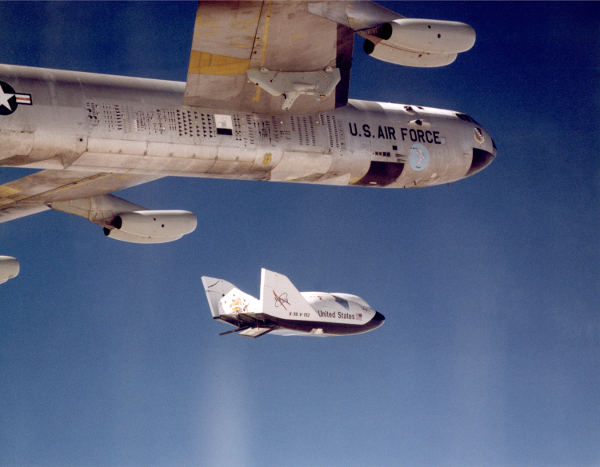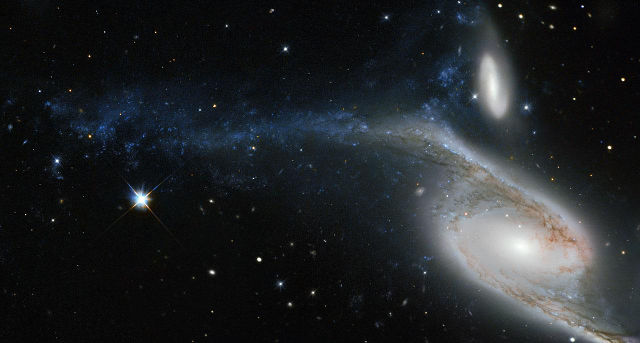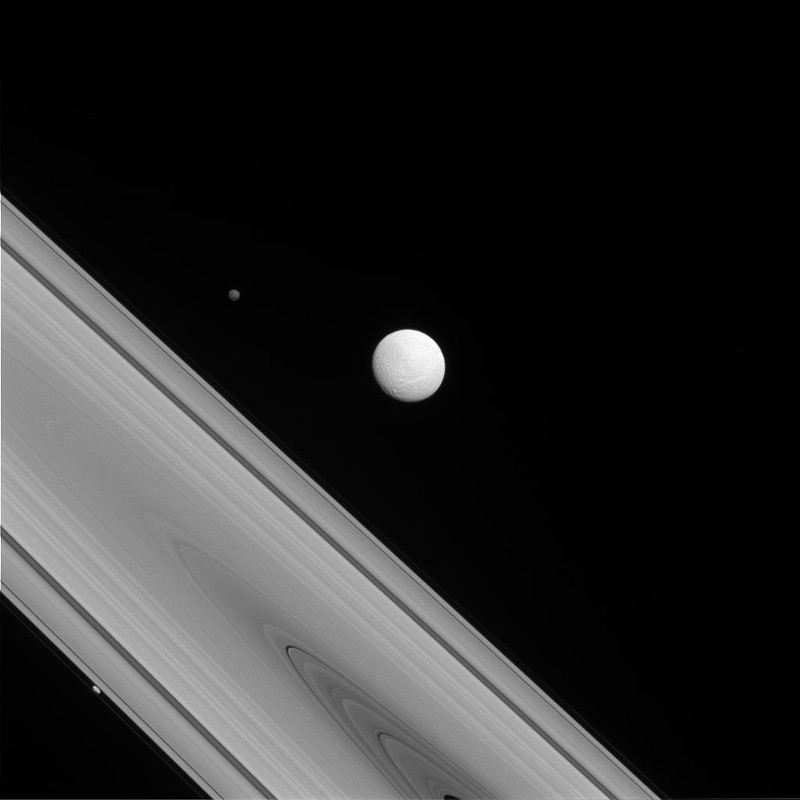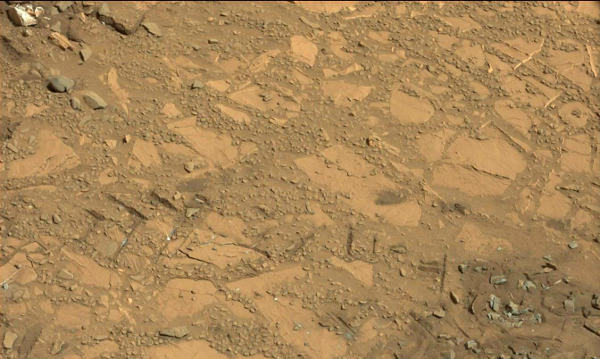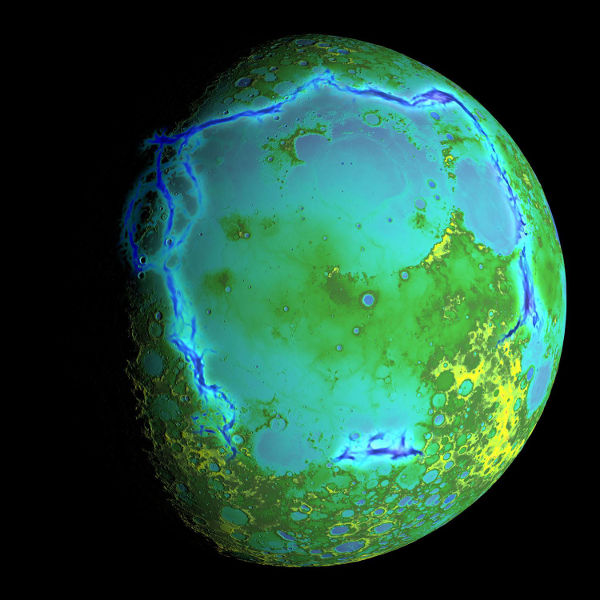
NASA’s Gravity Recovery and Interior Laboratory (GRAIL) included two lunar probes (Ebb and Flow) that orbited the Moon’s poles to collect data on its gravity field. This topographical view uses data collected by the Lunar Orbiter Laser Altimeter and shows the gravitational anomalies bordering the Procellarum region (in blue). Scientists interpret these anomalies in lunar gravity as likely resulting from ancient lava-flooded rift zones buried beneath volcanic plains on the Moon.
